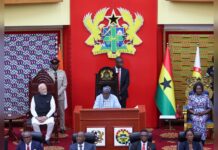There is no historical precedent for the current worldwide shutdown of most ‘non-essential’ economic activities in response to the COVID-19 pandemic. Nor do policymakers have any experience of trying to engineer a smooth recovery after a shock of this magnitude. Clearly, however, governments now need to take responsibility. With markets having vanished or sharply contracted, the public sector has become the lifeline for millions of people and companies in distress.
Both developed and developing countries urgently need large-scale counter-cyclical funding to help maintain economic activity, and especially jobs. And one of the key instruments that most governments and the international community have to help achieve this is development banks. These institutions can significantly leverage public resources to help minimise economic decline, support recovery, and finance structural transformation.
Development banks operating on a national, regional, or global scale are frequently overlooked even by financial specialists. But there are more than 400 of them, with combined assets of more than US$11trillion, according to the French Development Agency (AFD), equivalent to roughly 70% of the assets of the entire US banking sector. Capitalized by governments, but co-funding their lending with the private sector, development banks commit US$2 each year, representing 10% of annual global investment.
These institutions range from the most global (the World Bank) to the most local, and from the largest national development bank (China Development Bank, with US$2.4trillion in assets) to very small lenders. But they share a common purpose, and can help to lay the foundation for a different financial model that considers not just profitability but also equitable development and climate-change mitigation.
Indeed, development banks’ raison d’être is to overcome market failures, as well as to finance structural transformations that bring about a fairer and more sustainable economy. They most often target their operations where the market partly fails or is absent – such as financing small businesses, promoting innovation, building infrastructure, providing housing for the poor, and mitigating climate change. And they fund concrete projects or sectors with long-term finance.
National development banks have mandates that distinguish them from purely commercial banks, and are thus a ‘visible hand’ that governments can activate to help mitigate the economic fallout from the COVID-19 crisis. And international development banks, which have a mandate to finance projects in poorer countries, can channel some of their long-term funding to these economies via using resources provided by rich countries.
This is true not only of multilateral, regional, and bilateral development banks, but also of development-finance institutions devoted to private-sector financing in developing economies. The latter group includes members of the Association of European Development Finance Institutions, such as Dutch development bank FMO, Germany’s DEG and France’s Proparco. In particular, international development banks should quickly scale up long-term lending to local commercial banks, which can then lend to local companies.
If development banks worldwide increased their activity by 20%, they could mobilise an additional US$400billion this year alone. Moreover, because these institutions not only channel their own funds but also catalyse private finance, the amount available for economic recovery could at least double – implying US$800billion or more of additional financing this year.
To this end, several national development banks have already announced major initiatives – with Germany’s KfW planning to increase lending by €100 billion (US$108billion), and Brazilian state banks preparing to boost lending by an equivalent of 4% of the country’s GDP. Colombia’s Bancóldex and France’s AFD also are working on large plans. These initiatives need to be implemented quickly and effectively, and other countries should take similar action as soon as possible.
For governments seeking to realign their national development banks in this way, success depends on meeting three conditions. First, these banks should combine transparent, efficient, and accountable governance with decision-making autonomy. Second, they must have sufficient scale – which may require governments to provide additional capital. And third, these institutions need appropriate instruments that enable them to mobilise sufficient private finance while channelling their own funding to meet development objectives.
COVID-19 has plunged the world into an unprecedented economic crisis. But by significantly increasing their lending, development banks can support economic activity and jobs, and help to build a more equitable and sustainable future.



Stephany Griffith-Jones is Emeritus Fellow at the Institute of Development Studies at the University of Sussex and Financial Markets Director at the Initiative for Policy Dialogue at Columbia University. Régis Marodon is Special Adviser on Sustainable Finance at the French Development Agency (AFD). José Antonio Ocampo, a professor at Columbia University, is a former Minister of Finance of Colombia, and former United Nations Under-Secretary-General for Economic and Social Affairs.
Copyright: Project Syndicate, 2020.
www.project-syndicate.org










